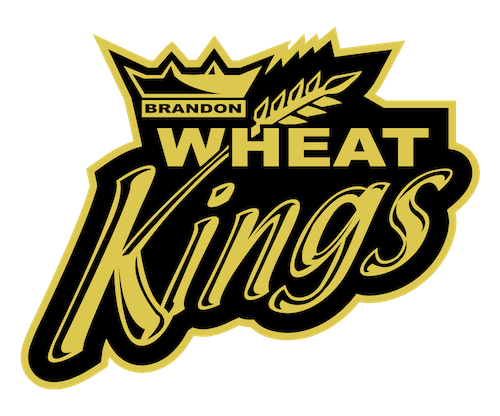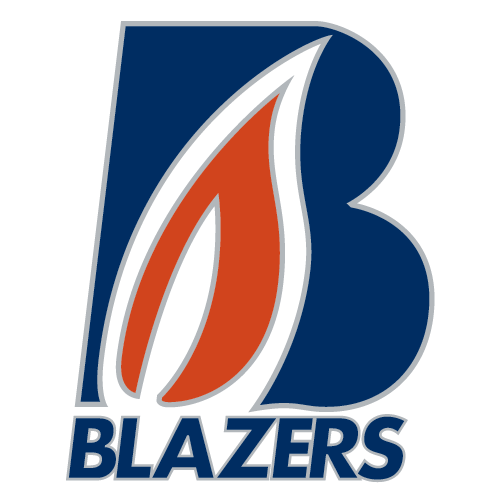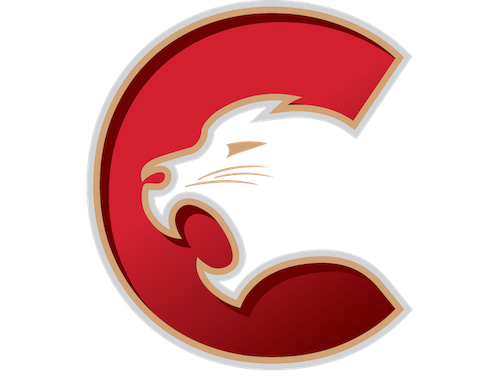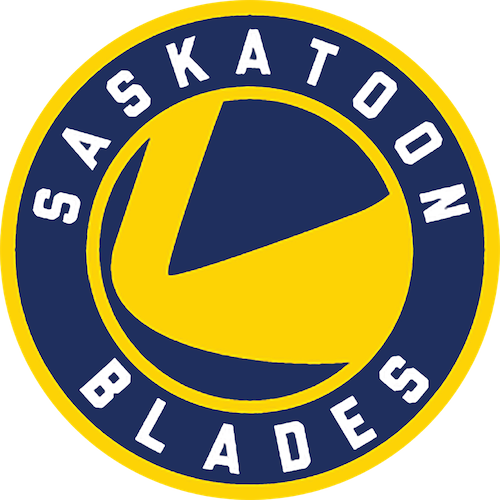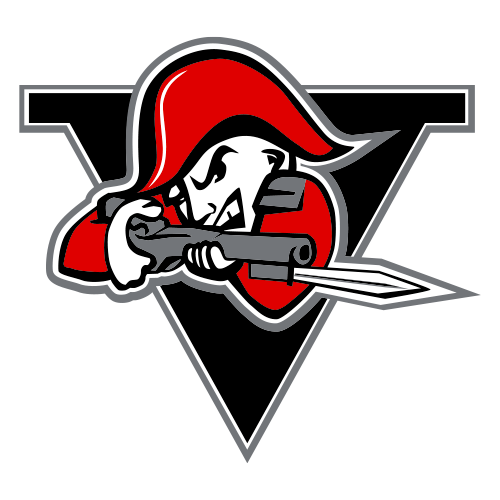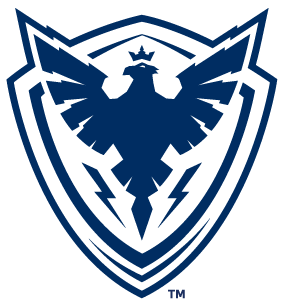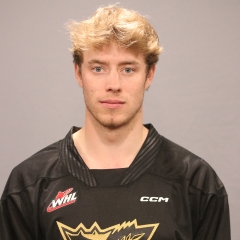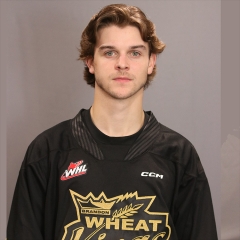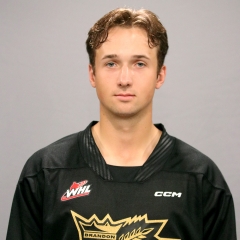Calvert embarks on next chapter
At 17, Matt Calvert knew he was going to play in the National Hockey League.
Since he had failed to earn a spot on the Brandon Wheat Kings and was instead playing in the Manitoba U18 AAA Hockey League that season, his friends at Vincent Massey weren’t convinced that was his destiny. The topic came up one day when Calvert, now 31, mentioned in English class he hadn’t given up on his dream.
“They looked at me and said ‘Matt, you’re 17 and you’re playing AAA hockey,” Calvert said. “I’m like ‘You can go to B.C. junior, the (Manitoba Junior Hockey League), go college and sign as a free agent, I knew that was a thing.
“There was a route and I saw some small guys doing that.”
His friends teased him about it later, but Calvert stuck to his guns and fired back.
“I’m not giving up on it,” Calvert said. “That was the running joke for a while.”
As it turned out, he made the improbable journey and proved a lot of people wrong.
Calvert, who was born and raised in Brandon, was the youngest son of Leo and Alice. He began skating around age three on a small backyard rink.
“My dad and mom taught me, and my older brothers,” Calvert said. “Mike is eight years older than me and Mark is two years older than me, so I was the younger brother who followed along and did everything. My parents had both of them in hockey, and that’s where it all started.”
As soon as he was old enough, Calvert’s second home became the nearby Westridge Community Centre, where he headed every day after school.
“Kids do skill training now,” Calvert said. “I did Westridge Community Centre.”
He started playing organized hockey at age six — a year later than some of his friends — in part because his parents already had two sons in the game.

Calvert initially wanted to be a goalie like his favourite player Patrick Roy — “I always dreamed of making the big save” — but his parents balked at the expense and he ultimately found it boring.
“I wanted the puck,” he said. “I wanted to be the guy.”
With the benefit of hindsight, Calvert is grateful for all his parents sacrificed. Neither was especially athletic, but they ensured their boys played hockey, with baseball in the summer, and without any pressure to excel.
“My mom and dad after each game, (would ask) ‘Did you have fun? If we lost, it would be like ‘I don’t want to talk to you,’” Calvert said with a chuckle. “If we won, it would be ‘Yeah, I had fun.’ If you worked hard, they were happy. That was all it ever was to me, I was able to treat it like any other sport. I wasn’t specialized in it. It wasn’t ‘You need to be a hockey player.’
“That’s why I love it to this day. My parents taught me discipline, they taught me hard work, which allowed me to play hockey.”
It was the perfect environment for him to flourish in. The multi-sport athlete, who also loved track and field and dreamed of running in the Olympics, began to excel on the ice.
His ability was nurtured when he was coached by former Wheat King Cam Plante and his brother Mark, who encouraged the youngsters to play for each other.
“These guys taught us at a young age what it took to be a team player,” Calvert said. “Our group to this day is close-knit.”
He began to excel on the ice, but at 15, the tiny youngster’s size caught up with him when he went unselected in the Western Hockey League’s bantam draft despite finishing near the top in under-15 league scoring.
“I had just a massive chip on my shoulder,” Calvert said. “That’s my career right there. I joke with Don MacGillivray, the coach of the Wheat Kings now, that he cut me for (the provincial) U17s (team). Things like that I always remembered. It was never to put it in someone’s face: ‘Hey, I made it.’ It was that I always thought I was the best in my age group, and humbly speaking I knew I was, but I always got down because of my size. That was my belief system through the whole process.”
Scouts told his father that if Calvert ever grew, to call them. He took that as more fuel on his fire as he waited to grow.
“I love a challenge, and my size was the challenge,” he said, noting the work ethic he is known for came from his parents.
He attended Brandon’s camp that year — he had invitations from other teams as well — but more importantly, he earned a spot on the U18 AAA team, which was coached by Craig (Chevy) Anderson and Mark Johnston. They were doing measurements at camp, and their tape only went to five-foot-four, well above the five-foot Calvert.

“Mark and Chevy are smaller guys too and they looked and said ‘Five-four, mark him down,’” Calvert said. “I went on the scale and it was like 100 pounds, maybe 90-some, but they took a chance on me that first year.”
He only scored once that season, and didn’t get a single invitation to a WHL camp at 16.
“To me, that was the turning point,” Calvert said. “If you want it, you scored one goal in AAA midget, you’re five feet tall, 100 pounds at the most. Are you going to be a player or not? That was in my mind, and I went to work that summer.”
He grew about four inches, and exploded for 24 goals and 30 assists in 38 games.
That output brought him back to Brandon’s camp at 17. Calvert recalled he played well until he broke his wrist coming across the middle when he ran into veteran Brandon defenceman Theran Yeo.
Around that time, he began working with Bobbi Schram at Outperforme Athletics, who he said is one of the smart people he has been lucky enough to surround himself with over the years.
“Before I had money, you name the hour and I would text her and say my hip is hurting or my back hurting, and she would meet me Sunday nights at the physio clinic and work on me basically pro bono just to give me that shot at being my best,” he said. “… She was there for me every step of the way.”
Calvert went back down to AAA, where he scored 28 goals and added 55 assists in just 30 games, and won a provincial championship.
The Wheat Kings listed him that season, but by that time, he had Junior A teams from across Western Canada trying to recruit him, and the strong student was actually considering a future in college hockey.
“My dream was to be an accountant,” Calvert said. “I just played hockey on the side.”
If there was a silver lining in his late start in the WHL, it allowed him to play high school sports at Vincent Massey.
“I got to go to high school with my friends,” Calvert said. “We won a midget championship my last year, I played baseball that same year and we won the Brandon league. I got to be a kid.”
At the same time, he had grown up attending WHL games and that remained aspirational for him. He remembers players like Tyler Plante and Steven Later, and the playoff run with the smiley faces.

He and his friends even had a routine when the team wasn’t scoring, heading up to buy an Oreo ice cream sandwich, which often resulted in a goal. He also had friends who billeted players, something he considered incredibly cool.
By the time Calvert arrived at the 2007 Wheat Kings camp at age 18, he had grown to five-foot-nine and 172 pounds.
“I think Matt Calvert will be really good,” Brandon’s longtime director of player personnel Al MacPherson said at the time. “He’s older than the other guys and he’s very, very skilled player.”
In a pre-season game, he was placed on a line with Brayden Schenn and Scott Glennie, a combination that ultimately stayed together for three seasons.
Nicknamed the Baby Blue line for the colour of jerseys they wore in practice — each line wears a different colour, with defencemen in black — they quickly became a force after a slow start that saw them earn a combined 10 points in the first eight games.
“As an 18-year-old, I expected top two lines, and Crim didn’t promise me anything, but we were third line,” Calvert said. “You always do that with the young guys, and not being a hockey family, I didn’t know that. We clicked right away. Schenner was the perfect centreman — to tell you the truth, I was searching for Schenner my whole NHL career and I found glimpses of him but never him … — and how lucky was I to be with him? I was very fortunate.
“And then you add Scott Glennie, who was very north-south like myself and was just super talented … I would say a month, a month and a half into the season we were really like ‘We’re not just a good young line for Crim, we can play.’”
The season went so well that Schenn led the team in scoring with 71 points and Calvert finished second with 64 on 24 goals and 40 assists.
Calvert, who had been playing U18 hockey a season earlier, started to pop up on Central Scouting draft rankings during the season. He and his dad chatted by phone the first time it happened, puzzling out what it meant.
His stock continued to rise, and by the end of the season he was ranked 45th among North American skaters. He attended the NHL Combine in Toronto for top prospects, the first time he had ever set foot on a plane.
There were still doubters, however, as just seven teams interviewed him, with many players doing two dozen or more. He raised some eyebrows when he told teams he had a job pumping gas in the summer to pay for his training, which is virtually unheard of for top players.
He didn’t go to Ottawa for the draft, held on June 20-21, 2008, instead watching on TV in the basement of the family home.
Calvert had been told he might be picked in the second or third round, with a worst-case scenario of the fourth round. By midway through the fourth, he couldn’t take it anymore and went outside to shoot some hoops.

He sat down again as the fifth round started, and with extended family starting to come over, he saw his name pop up on the screen when the Columbus Blue Jackets used the 127th pick.
“It was a crazy feeling,” Calvert said. “I get goosebumps right now talking about it. My parents were in complete shock. ‘What just happened?’”
A neat part of the incredible ride for him was that it took place in his hometown playing for the team he watched growing up.
“It was special,” Calvert said. “It was being around people I love and them cheering for you and seeing them after the game. It was honestly a treat.”
Extended family would arrive on game nights and he would have to head to the rink as they enjoyed themselves at the house before heading to the Keystone Centre.
“Every home game was like a party for my family,” Calvert said. “I would wake up and my mom was dialled in. She had my pregame meal ready, the same meal, the same routine.”
The Baby Blue Line returned for the 2008-09 season ready to build on their rookie seasons, but disaster struck for Calvert on Dec. 5, 2008 during a game against the Broncos in Swift Current.
He’s not sure how it happened, but he sustained a stress fracture in his lower back, costing him a chance to try out for the national junior team after he had earned an invitation.
“That was probably the most heartbreaking moment of my career because I knew I had a shot of making the team as a bottom six guy,” Calvert said. “I ended up going to world junior camp and tried skating once again and their doctors looked at me and couldn’t figure it out. An MRI told me I had a stress fracture.”
He returned to the lineup on Jan. 3, and in the final 32 games of the season, he was kept off the scoresheet just 10 times while piling up 41 points.
Brandon, which went 42-24-3-3 and lost in the quarterfinals in his rookie season, went 48-19-3-2 and made it all the way to the Eastern Conference final during the 2009 playoffs before falling to the Calgary Hitmen.
“My 19-year-old season was huge because the game slowed down for me,” Calvert said. “The 18-year-old was good but the game was still fast. I didn’t know where guys are all the time.
“My 19-year-old year I got to go to an NHL camp and the confidence you see some guys come back with is crazy. It’s ‘Wow, I do have that next level.’ When you come back to junior, it feels slow at the start if you played that pro style, but you feel so much more dominant and comfortable.”

Calvert’s future could have gone two very different directions in the 2009-10 season as Brandon prepared to host the Memorial Cup.
He had a great camp with Columbus. After leading the NHL’s Traverse City rookie tournament in scoring and getting into three fights — ‘It’s probably the most confident I’ve ever been as a hockey player” — he went to main camp and was fitting in with the veterans.
The organization told him late in camp that they wanted to start him in the American Hockey League, adding he would be one of the first guys called up to the Blue Jackets.
“I was super honest with them,” Calvert said. “I said ‘I don’t know, my heart was set on going back for the Memorial Cup as a 20-year-old. I was an 18-year-old as a rookie in the Dub and just got that confidence. I would love another year of dominating but I do think I can play at this level.’”
He was conflicted, with the Columbus organization making promises on one side and McCrimmon calling to check on his status on the other.
He ultimately came home to Brandon, contributing 47 goals and 52 assists in 68 WHL games, and adding 16 more points in 15 playoff games as the Wheat Kings again fell to the Hitmen in the conference final.
“I never regretted it for a second and I still don’t to this day,” Calvert said of his decision. “What’s another year of rushing into pro hockey? That was my mindset.”
The Calgary series is remembered for Calvert’s performance in a Game 3 loss when he scored a shorthanded hat trick in less than seven minutes in the second period to set a league record that still stands.
Calvert was named co-captain that season with Schenn, after serving as an alternate the year before. That was also special.
“It was surreal for me,” Calvert said. “It was weird looking down and seeing a C or even an A on my jersey. You looked at the leaders when I grew up, the Wade Reddens, the Ryan Craigs, the Chris Dingmans, the Jordin Tootoos, you name it. I idolized those guys and now I was one of them.”
When the Memorial Cup rolled around, Calvert scored three times and added assist in five games, and was named to the tournament all-star team. He was on the bench when Jay Fehr scored in overtime to lift Brandon to a 4-3 overtime victory in the semifinal over their arch-rival Calgary to book a spot in the final.
“It was one of those goals that didn’t hit open net,” Calvert said. “It went five-hole so there was uncertainly until all of a sudden you see the celebration. Man, that building, I get goosebumps again. It was amazing.”
The tournament didn’t end how they wanted, however, with Taylor Hall and the Windsor Spitfires dominating the Wheat Kings in the final to win the Memorial Cup.

“It was extremely hard,” Calvert said. “I was kind of embarrassed a little bit by the outcome. There’s no way a team should lose 9-1 in the final, but for whatever reason we found a way to do it. It was surreal. It affected me for a couple of years, it affected my mindset on things … It also made me think a little more negatively than I would have in the past.”
The loss also closed the book on Calvert’s junior career.
He remembers shaking McCrimmon’s hand before he left the rink, but he wasn’t looking ahead to the next step. Instead, he was considering what was gone forever.
“I know a lot of guys who expect to be in the NHL are in a rush to get out of junior hockey, but I loved every minute of it, I loved every hour on the bus,” Calvert said. “I was the guy who stayed up until two in the morning playing cards. I never complained once about those road trips. I enjoyed them. That’s my thought on junior hockey. I didn’t want to leave.”
He started the 2010-11 with the AHL’s Springfield Falcons, receiving his first callup to the NHL early in the new year.
He found out the day before he was joining the Blue Jackets in Anaheim to face former Winnipeg Jets star Teemu Selanne and the Ducks on Jan. 7, 2011.
On his second shift, Calvert high-sticked Selanne — “As a Manitoba kid, that was another surreal moment” — but found his way through 10 minutes and 41 seconds of ice time.
One night later, he scored his first goal, although it won’t be mistaken for a beauty.
He was forechecking in the Los Angeles Kings zone and deflected a pass coming across the middle. The puck headed back toward the Los Angeles net, and goalie Jonathan Quick fanned on it when he went to play it with his stick, deflecting it back toward the net with just enough momentum to carry it across the goal line.
“It was probably one of the worst first goals in the history of the NHL,” Calvert said. “Even one going in off a skate is better than that one. But I’ll take it. You tell your grandkids it was bar down.”
He said it gave him incredible amount of confidence because goals are so hard to come by that level.
As a rookie, he earned a spot on the penalty kill but was learning on the job. The Blue Jackets were playing the Detroit Red Wings one night when he began to pressure Pavel Datsyuk along the half-wall, like he would a junior player, to chase him out of the zone.
Datsyuk drew him in out of position and then casually flicked a little pass over his stick to Nick Lidstrom.

“They completely broke me down,” Calvert said, adding his teammates were quick to point out the mistake. “They were like ‘Hey kid, you can’t be that aggressive. I was gung ho and thought I could do my little defensive tricks on these guys and really catch them but they were so good and so patient. That was my starstruck moment. It was ‘Now I’m playing against these guys and have to figure out how I can beat them.’”
He spent most of the 2011-12 season in the AHL, playing just 13 NHL games. He split the season between Springfield and Columbus in 2012-13, finally making the NHL for good in the 2013-14 season.
Calvert was in his fourth season on a one-way deal before the feeling of being a little starstruck began to subside, although he adds it never completely goes away.
“I was established and playing first line with (Brandon) Dubinsky and (Cam) Atkinson,” Calvert said. “We were matching up and kind of a shutdown line. It wasn’t your ideal scoring first line — we should have been second or third — but we were shutting down like (Joe) Thornton and (Patrick) Marleau. That was the year the new challenge for me was ‘Hey, you’re not trying to fit in, you’re here. Now your goal is to shut down the best in the world.’”
Calvert said it was initially odd playing in a city where there weren’t a lot of diehard hockey fans like at home, but he enjoyed Columbus, where Ohio State sports are the big games in town. He said when the Blue Jackets finally made the playoffs in 2014, he noticed a big difference.
“It was amazing,” Calvert said. “You would be very surprised. They stood the whole game. My parents were there for a bunch of playoff games and hated it because they had to stand the whole game. It was like a football game. That city has so much potential.”
However, after eight seasons in the organization, Calvert became a free agent following the 2017-18 season.
He met with management in Calgary and Vancouver, but was ultimately swayed by the Colorado Avalanche’s low-key approach after years of playing for the fiery John Tortorella. He also appreciated their roster, which included stars such as Nathan McKinnon and Gabriel Landeskog.
On July 1, 2018, he signed a three-year deal with the Avalanche.
“I was just too comfortable in Columbus,” Calvert said. “I was the longest tenured guy there so I was super excited about UFA (unrestricted free agency). I had quite a few teams interested.”
“Being a role player behind guys you think you can eclipse or don’t bring it every night is very hard. When you’re a role player behind talents like McKinnon and guys who score and want to be the best, sign me up all day. That was the biggest difference for me, and I had a chance to be a leader because it was a younger team.”
Calvert responded with a career high 26 points in 82 games in the 2018-19 season, but played 50 games the next season and was able to appear in just 18 games during the 2020-21 season due to his lower back issues and his sixth diagnosed concussion.
He had spinal fusion surgery on May 24 and the doctors made the decision on his career for him, which may have been a blessing.
“It was good I was told to be done because I’m not a guy who likes to quit,” Calvert said. “It sucks because I still think I have lots to give and I do think I can play in the NHL for a few more years. I wasn’t slowing down yet, but how bad do you want to give?
“A guy once told me you’re going to give a chunk of yourself to this league, you just have to decide how big a chunk that is. You won’t regret it, but you figure out what you want in life after.”
He had a pair of surgeries during his career, for a hernia and the back. He started physiotherapy on his back last Thursday in what’s considered a nine-month recovery.
Calvert was told he would have missed a full year of hockey, and was also noticing he couldn’t keep up with his young sons Kasey and Beau, who he has with wife Courtney.
“Hockey is fun and I love it, but I value family life and value those things over playing hockey and making my own little career and legacy,” Calvert said. “That was a big decision for me.”
In 566 regular season games over 11 seasons, Calvert contributed 95 goals and 108 assists with 376 penalty minutes. He actually had more shorthanded points (14) than power-play points (12) in his NHL career.
So what’s next?
In Calvert’s case, it’s a trip back to the future after he and his family sold everything in Colorado and moved back to Brandon, where they are building a new home.
He begins a job with the Wheat Kings soon that will see him offering the benefits of his experience while also providing another sounding board to players.
“The idea is kind of skills work/assistant coach casually,” Calvert said. “I obviously am not able to skate for another two or three months and I don’t want to ride the bus so I’ll be similar to Tyler Plante’s role as goalie coach. It will be two times a week and then roughly three-quarters of the home games. This year I’ll be at every home game. When they’re here, I’ll probably be there every day of the week. I need somewhere to go. I can’t sit around.”
He hopes to model the job on what he saw from Dan Hinote, who served as third assistant in Colorado, and was great at explaining what coaches needed from players while offering to help them get to that point. At the same time, Hinote wasn’t treated like a coach and players trusted him.
Calvert would like to teach within the system set up by the other coaches, something they don’t always have time to do.
“I’m excited about that role,” Calvert said. “That way I get time with my family and time to rehab. We’ll see how it goes for the first year and go from there.”
He had a somewhat similar coaching opportunity in Colorado but the draw of raising his children at home around their cousins brought the family home.
More than a decade after it ended, Calvert remains grateful for the opportunity he was given by McCrimmon and the Wheat Kings, and thankful for everything he took from the experience.
“It was huge, how comfortable I was,” Calvert said. “I didn’t have to go through that roller-coaster these kids do (when they move away from home).
“I still get people coming up to me with Wheat Kings stories or Memorial Cup or the natural hat trick, but that’s the stuff that sticks with you forever. Especially moving back to the city, I’m going to have a lot more of it but it doesn’t bother me.
“It keeps it alive for me.”
» pbergsonbrandonsun.com
» Twitter: @PerryBergson
